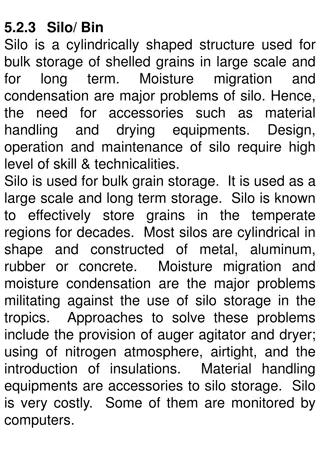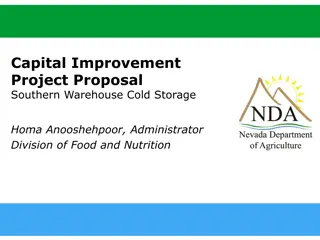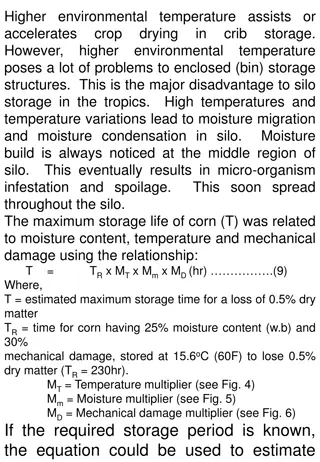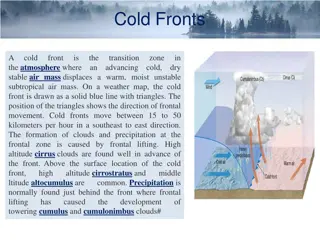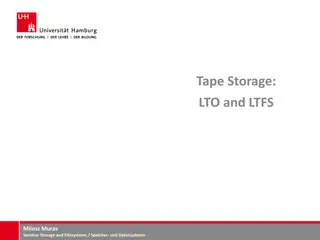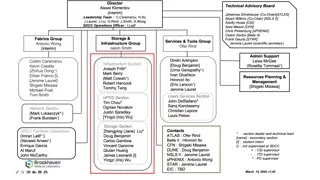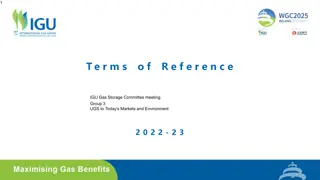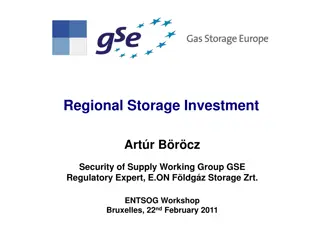Understanding Different Types of Silo and Cold Storage Systems
Different types of silos are classified based on aeration method, material of construction, technology sophistication, and structural stability. Controlled atmosphere (CA) systems like refrigeration and cold storage are also discussed, highlighting their benefits in preserving perishable products. Proper storage conditions, such as temperature and relative humidity, are crucial for maintaining product quality.
- Silo classification
- Controlled atmosphere
- Cold storage systems
- Preservation methods
- Storage technology
Download Presentation

Please find below an Image/Link to download the presentation.
The content on the website is provided AS IS for your information and personal use only. It may not be sold, licensed, or shared on other websites without obtaining consent from the author. Download presentation by click this link. If you encounter any issues during the download, it is possible that the publisher has removed the file from their server.
E N D
Presentation Transcript
5.2.3.2 There are different types of silo. Silo can be classified on the basis of: Aeration method/ system Material of construction Level of technology sophistication Structural stability Based on the aeration method, silo can be classified as: Mechanical ventilated silo Controlled atmosphere silo Hermetic silo Gas (nitrogen, oxygen, etc) silo Based on the material of construction, silo can be classified as: Metal (aluminum, steel, etc) silo Concrete silo Wooden silo Mud silo Composite silo Based on the level of technology, silo can be classified as: Conventional silo Instrumentalized silo Computerized/ automated silo Silo Classification
Based on structural stability, silo can be classified as: Deep silo Shallow silo 5.2.4 Controlled Atmosphere (CA) Controlled atmosphere storage system is a general classification that includes all forms of storage structures that have devices for controlling and monitoring the environmental factors (temperature, relative humidity and moisture). Silo, ware house, refrigerator and cold storage could incorporate controlled atmosphere system. 5.2.5 Referigeration Refrigeration is a typical CA system that can operate below atmospheric temperature. The evaporator unit of a refrigerator could depress temperature a little below zero degrees through the aid of R12 gas. A refrigerator is made up of components such as condenser,
5.2.6 Cold Storage Cold storage is a CA system that can further depress temperature below that of the refrigerator with the aid of R22 gas and maintain temperature below freezing point for a long time. It has similar components like the refrigerator but more bulky, expensive and could store for relatively longer time. It is recommended for highly perishable product with a high commercial value. Products such as fish, egg, dairy, vegetable, meat and poultry products are recommended for cold storage. The initial cost of cold storage is much. Cold storage operates at reduced temperature and regulated relative humidity. The basic advantages of cold storage include: (i) It retards respiration and other metabolic activities. (ii) It controls ripening and retards a aging softening, texture and colour change. It preserves color and texture. (iii) It retards moisture loss and wilting. (iv) It controls microbial activities and spoilage. (v) It retards spoiling and other undesirable growths. The following points must be noted for effective performance of cold storage. (i) The product must be in a good condition to be fit for cold storage. (ii) Product must be stored immediately after harvest. This is to ensure excessive micro-activity is controlled.
while for non-sensitive temperature product, the permissible value is 1.5oC. Pre-cooling: This is the rapid removal of field heat before storage. It is required for temperature sensitive product, especially fruits. Pre-cooling is achieved either by passing fast cold air through product; or hydro cooling with cold water; or by using ice contact Relative Humidity: Different product could be stored at different relative humidity. Relative humidity affects the keeping quality of product. At low relative humidity, product wilts. It is essential to know the appropriate relative humidity to store your product. Air Circulation and Package Spacing: Packaging should be done in a cold room such that there is a proper air circulation within and around the product. Also a uniform storage conditions must be maintained in the cold room. Other factors such as the respiration rate of product, heat of evolution and the refrigeration rate affect the performance of a cold storage. The following information are essential in the use of cold storage: Temperature fluctuations affect temperature sensitive crops. Therefore, keep temperature and storage condition steady and constant Pre cool fruits to remove field heat before products



